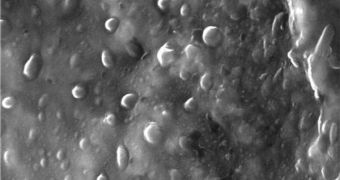Doctors and health experts have been amazed by how fast and efficient the skin repairs itself since the dawn of time. Within just a few days, superficial scratches to the skin are healed without any trace, and with no scars. Special mechanisms inside the skin contribute to this effect, and experts have been looking for ways of replicating them for quite some time now. Scientists at the Fraunhofer Gessellschaft, in Germany, have recently made this possible, when they have invented a new type of electroplated layer that contains nanovesicles. As soon as the layer is damaged, liquid flows from the capsules, and repairs it completely.
The tiny, nanometer-sized capsules are highly efficient at performing this task, AlphaGalileo reports. For a long time, the team behind the innovation, from the Manufacturing Engineering and Automation IPA, in Stuttgart, have been annoyed by the fact that rust-protective layers, which are placed on metals to prevent them from catching rust, once damaged, lose their abilities. The same does not hold true for the skin, and this is one of the main reasons why they turned to it for inspiration.
Introducing capsules in the layer itself is not a new idea. Research teams the world over tried to implement them, but they all ran into the same obstacle – the size of the capsules. They only manged to obtain structures about 20 micrometers large. Considering that the entire layer was supposed to be ten to 15 micrometers thick, that size was unsustainable. Additionally, several teams reported, they changed the physical traits of the layer, rendering it useless for the task at hand.
Now, the IPA researchers, working in collaboration with colleagues from the Duisburg-Essen University, have succeeded in devising a method that allows them to introduce the required liquid into the capsules at the nanoscale. The new constructs are only a few hundred nanometers in diameter, and are therefore measured on an entirely different scale than their predecessors.
“The challenge lies in not damaging the capsules when producing the electroplated layer. The smaller the capsules, the thinner and more sensitive their casing. The electrolytes used for these electroplated-technical processes are extremely aggressive chemically and can easily destroy the capsules,” IPA Department Director Dr. Martin Metzner explains.
The scientists are now working to further refine their finds. They think that several types of capsules can be used on the same coating, and that their active ingredients could be made to act like an adhesive, for example, combining on the spot to yield the necessary substance. The team estimate that their new layers will become available in one to two years, as soon as the capsule-production process is made even more efficient.

 14 DAY TRIAL //
14 DAY TRIAL //